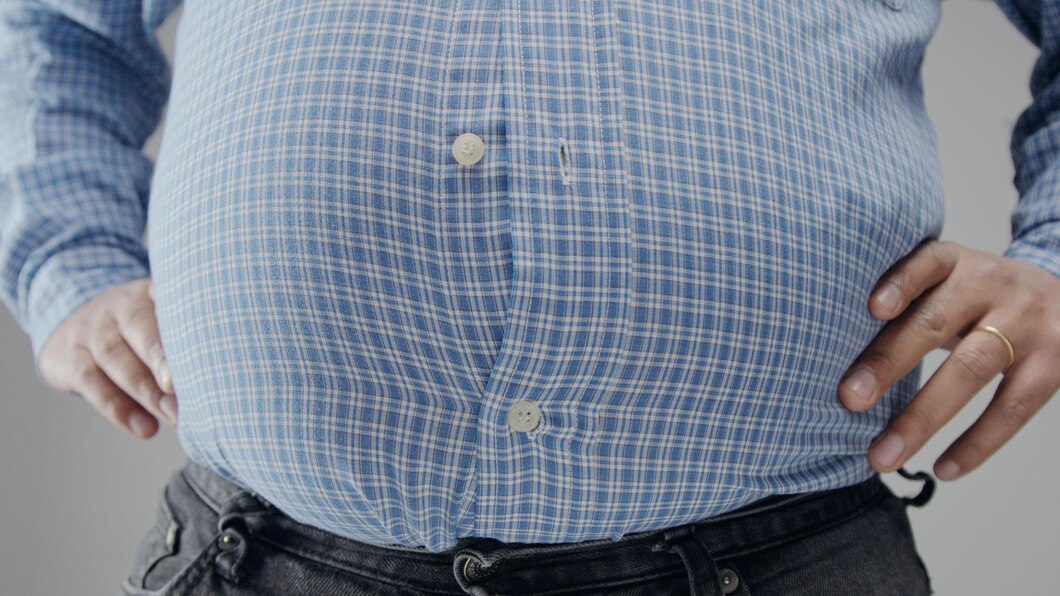
Belly fat is more than just an annoyance; it can affect your health in many ways. While a little fat is normal, carrying too much around your stomach can lead to serious health risks. Understanding what types of belly fat exist and how they can impact your health is the first step in addressing the issue.
There are two types of belly fat: subcutaneous fat and visceral fat. Subcutaneous fat is the layer right under your skin that you can pinch. Visceral fat, on the other hand, is deeper and surrounds your organs. Visceral fat is the more harmful type, linked to heart disease and diabetes. Knowing which type of fat you have can help you focus on the best ways to lose it.
Losing belly fat involves paying attention to the nutrients you consume. Protein, fiber, and healthy fats play significant roles in helping you trim down your waistline. These nutrients not only help you burn fat but also keep you full longer, making it easier to avoid unhealthy snacks. Adding these to your diet can lead to noticeable changes in your belly fat.
Eating balanced meals and practicing portion control can go a long way in losing belly fat. Plus, choosing whole foods over processed ones makes a big difference. Sticking to these eating habits can help you shed unwanted belly fat and improve your overall health. With some dedication and the right guidance, like what you’d get from the Bye Bye Belly Fat Bootcamp program, you can achieve lasting results.
Understanding Belly Fat and Its Impact on Health
Types of Belly Fat
There are two main types of belly fat: subcutaneous fat and visceral fat. Subcutaneous fat is found right under the skin. It’s the fat you can pinch with your fingers. This type of fat is less harmful and mostly affects your appearance. Visceral fat is deeper inside the belly area. It wraps around your internal organs like the liver and intestines. It’s more dangerous and linked to health problems.
Visceral fat releases toxins that can cause inflammation. This kind of fat is often associated with higher risks of serious health issues. It’s important to focus on losing visceral fat to improve your overall health. Understanding these types of fat helps you form a better plan to target the more harmful belly fat.
Health Risks Associated with Belly Fat
Carrying too much belly fat can lead to various health complications. One major risk is heart disease. Visceral fat affects how your body processes fats and sugars, leading to higher cholesterol levels and increased blood pressure. These changes can raise your chances of developing heart disease.
Diabetes is another major concern. Excess belly fat affects how your body uses insulin, a hormone that helps control blood sugar levels. This can eventually result in insulin resistance and type 2 diabetes. Belly fat has also been linked to a higher risk of certain cancers and liver problems.
Losing belly fat can significantly reduce these health risks. It improves heart health, lowers diabetes risk, and can even make you feel better overall. Understanding these risks can motivate you to take steps toward a healthier lifestyle.
Key Nutrients for Losing Belly Fat
Protein
Protein is essential for losing belly fat. It helps build and repair muscles, which can increase your metabolism. A higher metabolism helps you burn more calories, even at rest. Protein-rich foods keep you full, reducing the chances of overeating. Some good sources of protein include lean meats, eggs, beans, and tofu.
Fiber
Fiber plays a big role in fat loss, especially belly fat. It helps you feel full, so you eat less. Soluble fiber, in particular, soaks up water and forms a gel-like substance during digestion, which slows down the process. This helps you feel full longer. Foods high in fiber include fruits, vegetables, whole grains, and legumes.
Healthy Fats
Not all fats are bad for you. Healthy fats, like those found in avocados, nuts, seeds, and olive oil, can actually help you lose belly fat. These fats can make you feel full and satisfied, making it easier to stick to your diet. They also help your body absorb essential vitamins and nutrients. Including healthy fats in your diet can boost your overall health while helping you lose belly fat.
By focusing on these key nutrients, you can create a balanced diet that helps you achieve your belly fat loss goals.
Practical Tips for Healthy Eating
Portion Control and Balanced Meals
Eating the right portions is crucial when trying to lose belly fat. It helps you consume the right amount of calories without overeating. Use smaller plates to trick your mind into feeling satisfied with less food. Always try to fill half of your plate with vegetables, one-quarter with lean protein, and the remaining quarter with whole grains or healthy fats.
Balanced meals consist of various nutrients that your body needs to function well. A mix of proteins, fibers, and healthy fats in your meals can help you feel full longer and provide the energy you need throughout the day. This approach not only helps in losing belly fat but also ensures overall health.
Choosing Whole Foods Over Processed Foods
Processed foods often contain high amounts of sugar, unhealthy fats, and empty calories. These can lead to weight gain and increased belly fat. Instead, aim to eat whole foods that are closer to their natural state. Fruits, vegetables, whole grains, and lean meats are excellent choices.
Whole foods are rich in nutrients that help your body burn fat more effectively. They also keep you full longer, preventing unnecessary snacking. Swapping out processed foods for whole foods can make a significant difference in your weight loss journey. It’s a simple yet effective step towards a healthier lifestyle.
Additional Strategies to Support Healthy Eating
Meal Prepping and Planning
Planning and preparing your meals in advance can help you stick to a healthy diet. Spend some time each week to plan your meals and snacks. This can prevent last-minute, unhealthy food choices. Prepare and portion out your meals so they are ready when you need them. This strategy saves time and ensures you have healthy options on hand.
Meal prepping can also help you manage portion sizes better. Having pre-portioned meals means you are less likely to overeat. By taking control of your food choices ahead of time, you can stay on track with your goal of losing belly fat.
Mindful Eating and Listening to Your Body
Mindful eating involves paying attention to what and how you eat. Slow down and enjoy each bite. This can help you recognize when you are full, preventing overeating. Avoid distractions like watching TV while eating. Focus on your food and savor the flavors.
Listening to your body is another key aspect of mindful eating. Eat when you are hungry and stop when you feel full. This can help you avoid emotional eating and make better food choices. Mindful eating encourages a healthier relationship with food and can support your belly fat loss efforts.
Conclusion
Focusing on healthy eating habits and understanding the importance of nutrients can greatly help in losing belly fat. Incorporating strategies like portion control, balanced meals, and choosing whole foods over processed ones make a big difference in your journey. By planning your meals and eating mindfully, you can achieve better results and maintain a healthy lifestyle.
Supporting your weight loss efforts with proper meal prepping and listening to your body are additional ways to improve your health. These practical tips make it easier to stick to a healthy diet and achieve your goals.
Ready to take your belly fat loss journey to the next level? Join the Bye Bye Belly Fat Bootcamp at London Wellness. Our one-on-one weight loss management programs provide expert guidance and personalized nutrition plans to help you succeed. Contact us today to start your path to a healthier, happier you!


